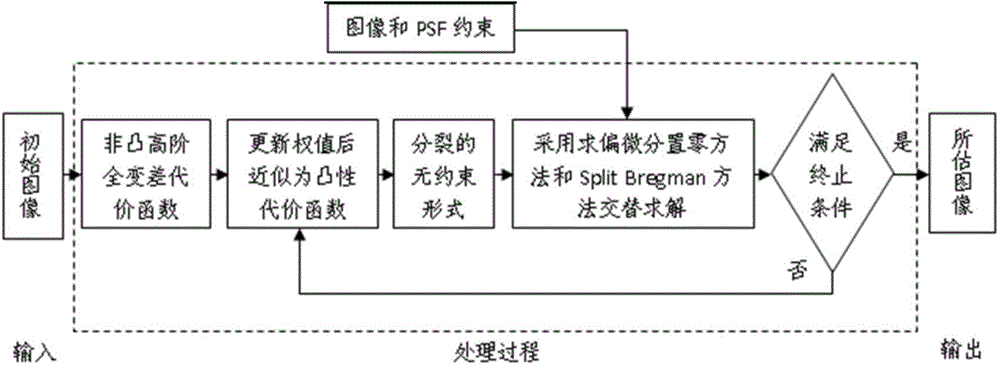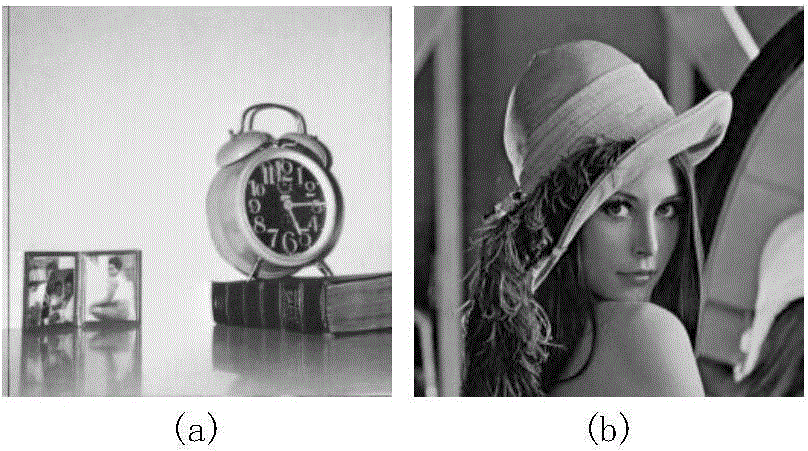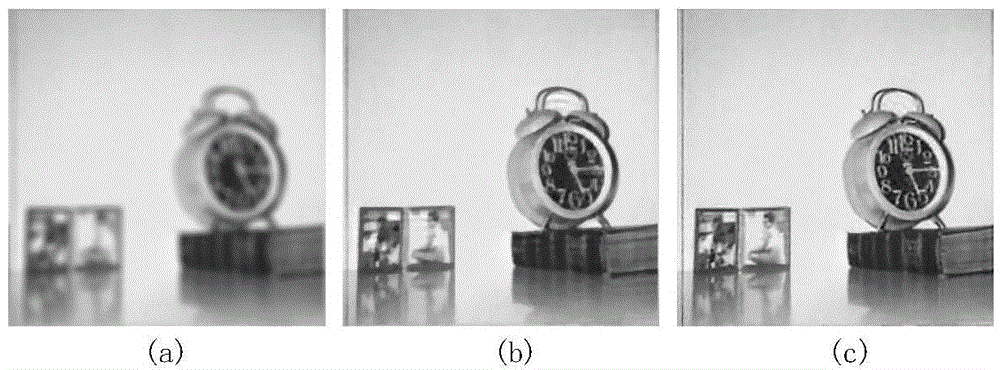Split Bregman weight iteration image blind restoration method based on non-convex higher-order total variation model
A total variation model and blind restoration technology, applied in the field of image processing, can solve problems such as subjective observations that are not suitable for human eyes, slice constant effects, etc.
- Summary
- Abstract
- Description
- Claims
- Application Information
AI Technical Summary
Problems solved by technology
Method used
Image
Examples
Embodiment Construction
[0022] figure 1 It is the basic frame diagram of the method of the present invention, and this method mainly is made of following four core steps:
[0023] Step 1: Input the initial image, introduce the image edge sparse prior information that satisfies the super-Laplacian model, and use a high-order filter bank that can generate a piecewise linear solution to form a non-convex high-order total variation regularized blind restoration model ( That is, a cost function with non-convex properties)
[0024] In image restoration, the degradation of most images can be regarded as a linear process, which can be expressed by the following formula:
[0025] f=k*u+n
[0026] Among them, k is a linear operator, which represents the point spread function (PSF, also known as blur kernel) that blurs the image, u represents the original clear image required, * represents convolution, n is additive noise, and f is known Degraded image.
[0027] The task of image restoration is to obtain a ...
PUM
 Login to View More
Login to View More Abstract
Description
Claims
Application Information
 Login to View More
Login to View More - R&D
- Intellectual Property
- Life Sciences
- Materials
- Tech Scout
- Unparalleled Data Quality
- Higher Quality Content
- 60% Fewer Hallucinations
Browse by: Latest US Patents, China's latest patents, Technical Efficacy Thesaurus, Application Domain, Technology Topic, Popular Technical Reports.
© 2025 PatSnap. All rights reserved.Legal|Privacy policy|Modern Slavery Act Transparency Statement|Sitemap|About US| Contact US: help@patsnap.com



